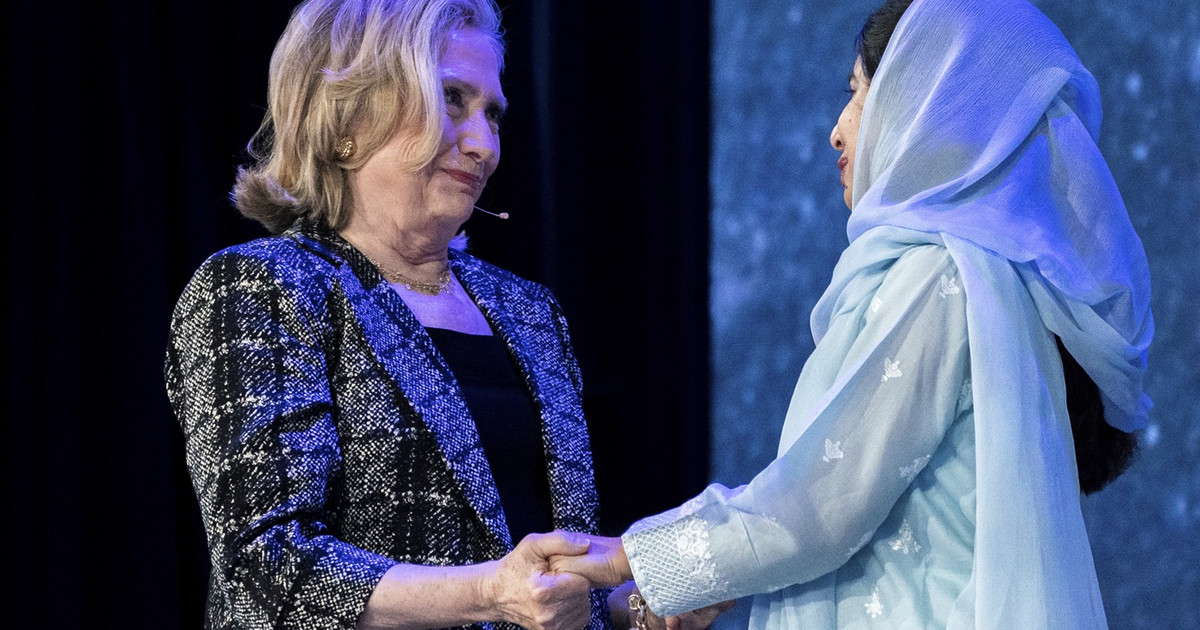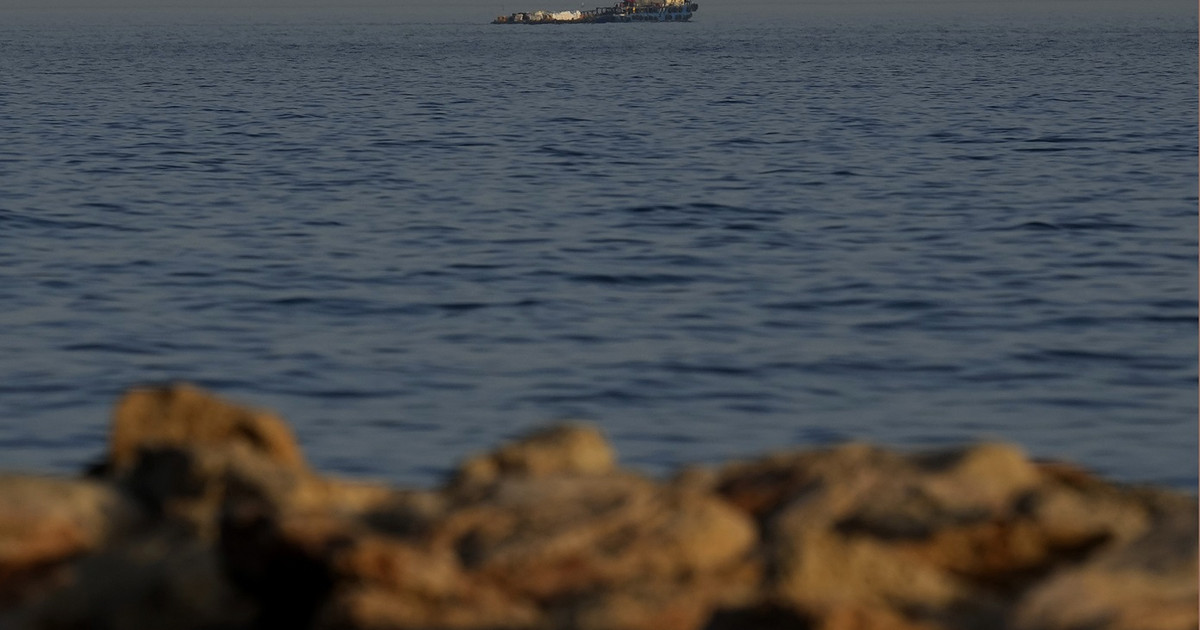Queen Elizabeth II was buried Monday at Windsor Castle. The monarch died on September 8, aged 96, after 70 years of reign – making her the longest-lived in UK history.
In an official statement, the royal family’s website confirmed: “The Queen was buried alongside the Duke of Edinburgh in the King George VI Memorial Chapel.”
The farewell followed centuries-old traditions, brought together thousands of mourners across Britain and mobilized world leaders.
In addition to processions from Balmoral Castle in Scotland, where she died, to Buckingham Palace, there was a grandiose state funeral, which was heavily guarded.
This is the first ceremony of its kind in Britain since the death of Winston Churchill in 1965, and marks the climax of a long period of mourning. Hundreds of thousands queued for several hours to view the coffin at Westminster Hall, the British Parliament, and memorial events were held in towns, cities and villages across the country.
Where did the queen’s coffin go?
On Monday morning (Brasília time), the coffin was removed from the catafalque where it was by a group of porters from the 1st Battalion of Grenadier Guards and carried in procession from Westminster Hall to the Royal Navy State Carriage of Arms.
In keeping with tradition, the carriage of arms made a short journey from New Palace Yard to Westminster Abbey, where there was a ceremony attended by Prime Minister Liz Truss. King Charles III and other members of the royal family followed behind the coffin.

After the state funeral, the coffin was transported from the hall to Wellington Arch –again with King Charles III leading some members of the royal family on foot, while Camilla, the Queen Consort and others followed by car– before making his final journey from London to Windsor.
The destination was St. George’s Chapel, already within the grounds of Windsor Castle, where a mass was celebrated, led by the Rector of Windsor.
A private funeral for the family was held in the afternoon, and the Queen was buried alongside her late husband, Prince Philip, in King George VI’s Memorial Chapel.
Real objects accompany the coffin
Charles leaves a message on his mother’s coffin
King Charles III paid a simple tribute at the funeral of his mother, Elizabeth II, this Monday (19). A card placed on top of the queen’s coffin, next to the flowers, reads: “In loving and dedicated memory. Charles R.”

Piper who woke the queen every morning plays for her to rest
For most of her reign, the queen was awakened by the sound of bagpipes being played under her window — in all her residences across the country. The Piper to the Sovereign, Piper to the Sovereign, has functioned for decades as a personal alarm clock, ringing for 15 minutes every morning as well as on state occasions.
But on Monday (19), the piper had a different role. The music that signaled the start of the queen’s mornings now signals the end of her funeral as he plays a final lament as the coffin is lowered into the royal vault beneath St George’s Chapel in the Windsor Castle.

minute of silence
The United Kingdom was a minute in complete silence in honor of the death of Queen Elizabeth II this Sunday (18).
The British fell silent out of respect for the monarch as the Big Ben clock struck at 8 pm London time (4 pm GMT).
Soldiers stood in a position of order and the entire nation of England, Wales, Scotland and Northern Ireland stood in admiration of the Queen.
Citizens face hours in line
People from across the UK flocked to the streets of London for the chance to get an up-close look at the coffin of queen elizabeth II and pay a final homage to the monarch, as a sign of respect.
The queue, also known as The Queue , spanned several kilometers over the course of days. People waited for hours, mostly overnight, with little opportunity to rest as the line kept moving.
See who are the people who waited hours to say goodbye to the queen
One of the people who decided to join the crowd of subjects and wait to say goodbye to the monarch was former England player David Beckham, one of the greatest idols of the country’s national team.
Beckham said everyone was there to celebrate the Queen, describing the experience as “special”.
King Charles and Prince William greet subjects
King Charles III and Prince William, the Prince of Wales, surprised the public and visited people waiting in line for hours to see the queen’s coffin on Saturday (17).
The royals were seen shaking hands with well-wishers near Lambeth Bridge.
Some people shouted “God save the king” as Charles passed and a woman held up a Paddington Bear toy – the fictional bear has become associated with the queen since she appeared in a sketch alongside the character during Platinum Jubilee celebrations.
Bolsonaro visits coffin and signs book of condolences
The president Jair Bolsonaro (PL) arrived in London on Sunday morning (18), to accompany Elizabeth II’s farewell ceremonies. Alongside the first lady, Bolsonaro visited the queen’s coffin in Westminster Hall.
The President then signed the book of condolences and paid tribute to the Queen: “Our condolences to the Queen’s family and the people of the United Kingdom. In Brazil, we still have strong memories of her time there, in 1968. For all that she represented for her country and for the world, the moment is one of regret and recognition of everything she has done for the world”.
Guard faints during wake
One of the officers guarding the coffin of Queen Elizabeth II, in Westminster Hall, the UK parliament, fainted and needed to be rescued. Details about the incident were not released.
The image shows that while the guards were conducting the exchange, the man fell with his face to the ground, being supported later.
anthem change
With the death of Queen Elizabeth II, the British anthem changed and returned to salute the “King” of the United Kingdom.
Since the monarch ascended to the throne in 1952, the lyrics have read “God Save the Queen”, which, in free translation, means “God save the Queen”.
But as the title and parts of the song are adapted according to the genre of the current monarch, now, with King Charles III ascending the throne, the British will return to singing “God Save the King”, that is, “God save the King ”, as well as in the time of King George VI, Elizabeth’s father.
Manifestations
While thousands of people took to the streets to remember Queen Elizabeth II, critics of the monarchy took the opportunity to protest, holding signs like “Not my king”, a reference to the new King Charles III.
Police intervened and, in some cases, arrested protesters, raising serious questions about the way dissent is being repressed in the country.
Liberty, a civil rights group, expressed its concern, saying in a statement: “It is very worrying to see the police applying their broad powers in such a heavy and punitive way to clamp down on freedom of expression.”
(published by Tiago Tortella, from CNN )
*with information from CNN and Reuters
Source: CNN Brasil
I’m James Harper, a highly experienced and accomplished news writer for World Stock Market. I have been writing in the Politics section of the website for over five years, providing readers with up-to-date and insightful information about current events in politics. My work is widely read and respected by many industry professionals as well as laymen.

.jpg)




